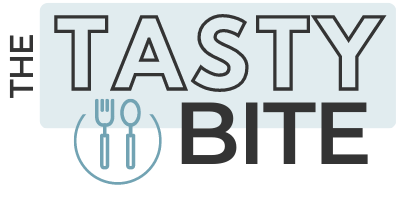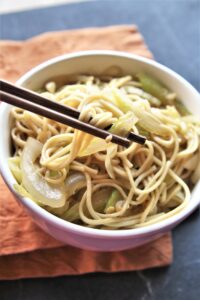Make this delicious vegan and vegetarian Copycat Panda Express Chow Mein at home! A quick and easy stir-fry with savory soy sauce, fresh vegetables, and perfectly cooked noodles. Ideal for plant-based diets and those craving a healthier take on Chinese food!
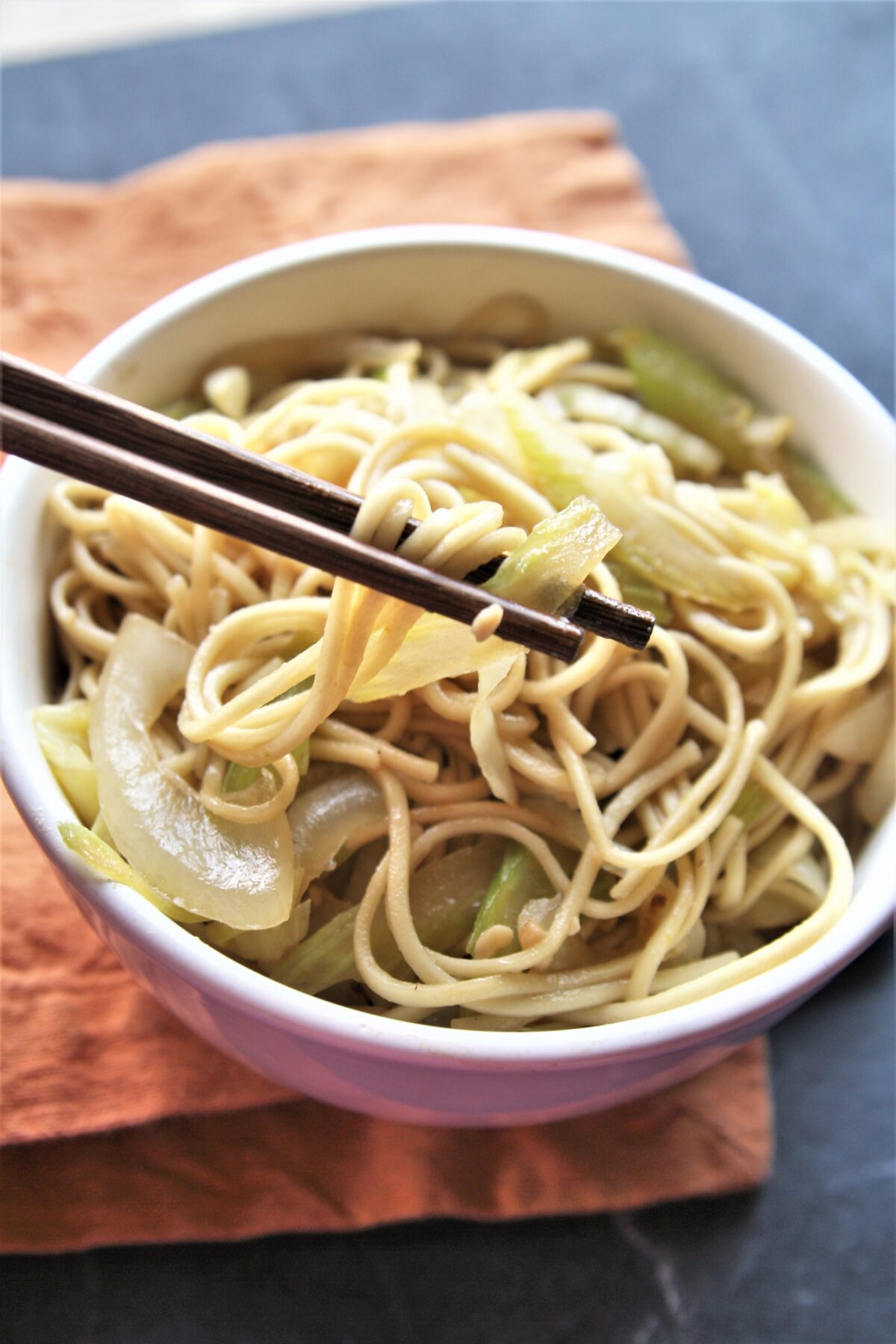
Craving the iconic Chow Mein from Panda Express? Now, you can recreate this delicious, savory dish at home with this simple and fully vegetarian/vegan version! This dish is perfect for a quick weeknight meal or a fun, plant-based dinner option. Featuring stir-fried noodles and crisp vegetables tossed in a delicious soy-based sauce, it’s the ultimate comfort food that even meat lovers will enjoy.
This vegetarian and vegan-friendly recipe is not only easy to make but is also packed with fresh, crunchy veggies and perfectly cooked noodles. Plus, it’s completely customizable depending on what you have on hand! Whether you’re trying to reduce your meat consumption, following a plant-based diet, or just craving something full of flavor, this Panda Express copycat Chow Mein recipe is sure to hit the spot.
For more Panda Express copycat recipes:
Panda Express Copycat Cream Cheese Rangoon
Panda Express Copycat Wok-Fired Shrimp (Sizzling Shrimp)
Panda Express Copycat Orange Chicken (no deep frying)
Panda Express Copycat Black Pepper Angus Steak
Why Vegan Chow Mein is a Great Option
If you’ve visited Panda Express locations recently, you’ve probably noticed the growing demand for plant-based options on their menu. Whether you’re ordering from a local Panda Express or browsing the Panda Express website, there are plenty of vegan menu items available, including their famous Beyond Orange Chicken and vegan-friendly options like vegetable fried rice and lo mein. The plant-based lifestyle is gaining momentum, and the fast-food chain has responded by offering a range of vegan entrée choices. For those following a vegetarian diet, this Chow Mein is a perfect option, offering a savory, hearty meal without any animal products.
Good news for those following a plant-based diet: This recipe is completely vegan, using only vegan-friendly ingredients. No need to worry about hidden animal-based seasonings like chicken broth or animal broth — this dish is free of those common additives.
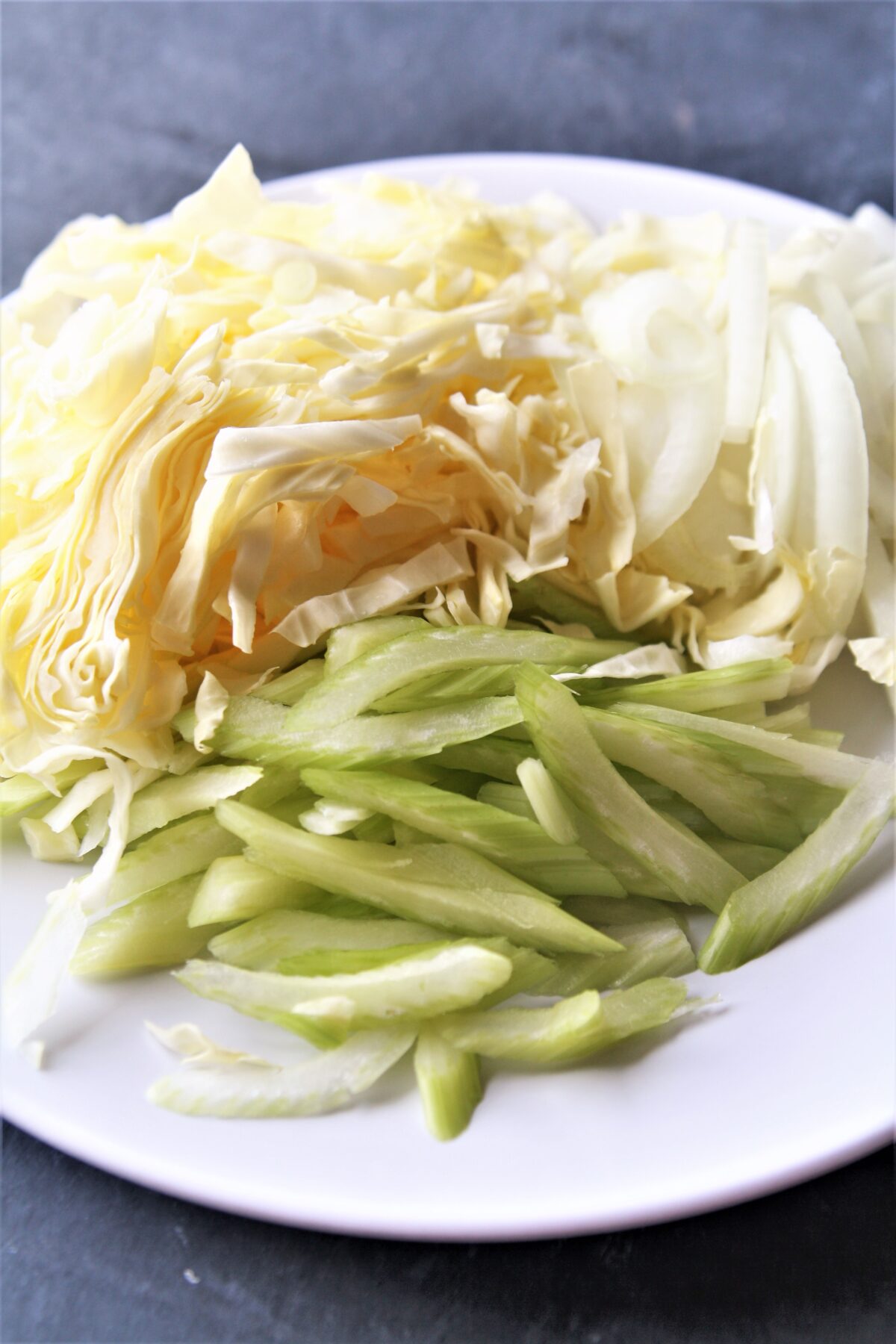

Ingredients for Vegan Panda Express Chow Mein
Soy Sauce: Adds savory umami flavor to the dish. I like to use low-sodium soy sauce. You can substitute it with tamari or coconut aminos for a gluten-free or soy-free option.
Brown Sugar: Provides a touch of sweetness to balance the salty soy sauce. You can swap it with maple syrup or coconut sugar for a more natural sweetener.
Garlic: Adds aromatic depth and a pungent kick. Minced fresh garlic works best, but you can use garlic powder in a pinch.
Fresh Ginger: Brings a fresh, zesty flavor that enhances the overall dish. Ground ginger can be used as an alternative, though it won’t be as vibrant.
Sesame Oil: Gives a hint of nuttiness to the dish.
Vegetable Oil: Used for sautéing the vegetables and noodles. You can substitute it with canola oil, sunflower oil, or any neutral oil with a high smoke point.
Yakisoba Noodles: These stir-fried wheat noodles are key to this dish, providing a chewy texture. Chinese egg noodles, chow mein noodles, or even pancit canton noodles can be used as alternatives.
Celery: Adds a crunchy texture and subtle flavor. If you prefer, you can swap it with carrots or snow peas.
Onion: Provides sweetness and depth when sautéed. You can use green onions or shallots as alternatives.
Cabbage: A classic stir-fry vegetable that adds crunch and volume. You can substitute it with bok choy, broccoli, or spinach depending on preference.
How to Make Vegan Panda Express Chow Mein Copycat Recipe
Prepare the sauce: In a small bowl, combine soy sauce, brown sugar, garlic, ginger, and sesame oil. Set the sauce aside while you prepare the other ingredients.
Prepare the noodles: Remove the yakisoba noodles from their packages and discard any included flavor packets. Rinse the noodles well under cold water, drain, and set them aside.
Sauté the veggies: Heat vegetable oil in a large wok or skillet over medium heat. Add celery and onion, sautéing for about 1-2 minutes until the onions begin to soften. Add cabbage and sauté for another minute until the cabbage begins to wilt.
Stir-fry the noodles: Add the rinsed noodles and the prepared sauce mixture to the vegetables in the pan. Stir everything together and continue to cook over medium-high heat for 2-3 minutes or until the noodles are heated through and coated with the sauce.
Serve: Once everything is cooked, remove the wok from the heat. Serve the Chow Mein hot and enjoy your homemade vegan version of this Panda Express classic!



Tips for Making the Best Vegan Chow Mein
Customize the veggies: This recipe is perfect for using up whatever vegetables you have in your fridge. You can add other veggies like red bell peppers, carrots, or green beans for added color and flavor.
Make it spicy: If you love heat, you can add a spicy sauce or some chili flakes when cooking the veggies or toss in a chopped jalapeño for an extra kick.
Protein options: To add some plant-based protein to this dish, consider adding tofu, Beyond Meat, or even edamame to the stir-fry.
Cooking the noodles: Don’t overcook the noodles or they will be soggy.
For extra crunch: If you’re craving a little extra crunch, top your Chow Mein with crispy wonton wrappers or crunchy fried onions.
What Can You Use to Substitute for Chow Mein Noodles
If you don’t have Yakisoba noodles for chow mein, there are several good substitutes you can use to achieve a similar texture and taste. Yakisoba noodles are typically made from wheat flour and have a chewy, slightly springy texture, so it’s important to look for substitutes with similar qualities.
Chow Mein Noodles: If you’re making chow mein and don’t have Yakisoba noodles, the most obvious substitute is chow mein noodles. These are also made from wheat flour and have a similar texture. You can find them in most Asian grocery stores, either fresh or dried.
Ramen Noodles: Ramen noodles can be a great substitute, particularly if you have a package of instant ramen on hand. Simply discard the seasoning packet and cook the noodles as usual. Ramen noodles have a similar texture to Yakisoba noodles and can easily soak up the flavors of your stir-fry.
Udon Noodles: Udon noodles are thicker and chewier, but they can work well as a substitute for Yakisoba noodles if you prefer a heartier texture. They’re a bit more substantial but still provide the same type of noodles for stir-frying.
Rice Noodles: If you’re looking for a gluten-free option, rice noodles are a great choice. While their texture is slightly different, they absorb flavors well and can be stir-fried just like Yakisoba noodles. Make sure to cook them according to the package instructions before adding them to your dish.
Spaghetti or Linguine: If you’re in a pinch and don’t have access to Asian noodles, spaghetti or linguine can be used as a last-minute substitute. While the texture is not exactly the same, these pasta options can work in a stir-fry when you toss them with the sauce and vegetables.
Each of these substitutes can work depending on your preferences and dietary restrictions, ensuring that you can still make a delicious chow mein without Yakisoba noodles.
Why This Panda Express Chow Mein Copycat Recipe is Great for a Vegan or Vegetarian Diet
This copycat Panda Express Chow Mein recipe is an excellent addition to your collection of vegan dishes or vegetarian recipes. It’s plant-based, so it’s free from animal ingredients, making it a perfect choice for anyone following a vegan diet or looking for meat-free options. Plus, the vegetarian options can easily be adapted to suit your personal preferences. Whether you want to try some vegan-friendly options like vegan orange chicken or stick to a classic favorite, this Chow Mein dish pairs well with any of your favorite plant-based items.
This dish is a perfect way to enjoy classic chinese food without worrying about cross-contamination from animal products. Many fast food chains like Burger King, Taco Bell, and even Carl’s Jr. have begun offering plant-based foods in response to the growing demand for vegan food — and this recipe is a great way to continue that trend at home!
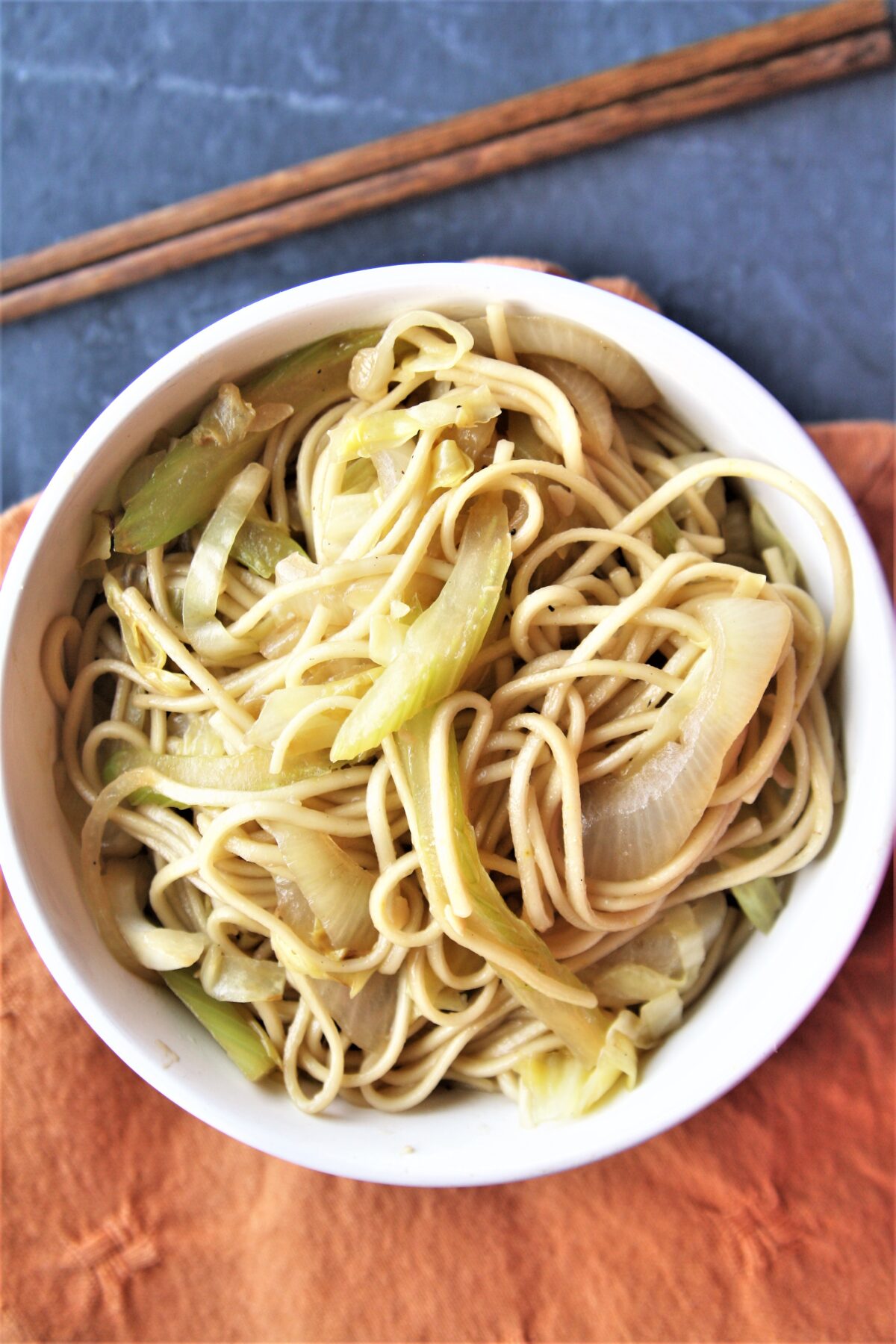

What to Serve With Chow Mein?
Chow mein is a versatile and flavorful dish, and it pairs well with a variety of sides to create a balanced meal. Depending on whether you’re serving it as a main or side dish, here are some great options to complement your chow mein:
1. Egg Rolls or Spring Rolls
Crispy egg rolls or fresh spring rolls are classic sides for chow mein. The crunchy texture and savory fillings add a nice contrast to the soft, stir-fried noodles. Egg rolls can be filled with pork, chicken, or vegetables, while spring rolls often feature shrimp or a mix of fresh veggies.
2. Dumplings
Dumplings, whether steamed or pan-fried, make a fantastic accompaniment. You can serve pork, chicken, or vegetable dumplings, which complement the flavors of chow mein and add another savory bite to your meal.
3. Stir-Fried Vegetables
A side of stir-fried vegetables like broccoli, bok choy, snow peas, or bell peppers can add more color, texture, and nutrition to your meal. The fresh, crisp vegetables also balance the richness of chow mein while enhancing the overall flavor profile.
4. Hot and Sour Soup
For a more complete meal, a bowl of hot and sour soup or wonton soup can be a perfect starter. The warm, tangy, and spicy soup contrasts well with the flavors of chow mein and prepares your palate for the main course.
5. Sweet and Sour Chicken or Pork
If you’re serving chow mein as a main dish, pairing it with sweet and sour chicken or pork is a popular choice. The tangy, flavorful sauce of sweet and sour dishes complements the savory noodles in chow mein and adds a burst of flavor to the meal.
6. Fried Rice
For a hearty meal, you can also serve chow mein alongside fried rice. This combination is often seen in Chinese cuisine, where both dishes are served together to offer a variety of textures and flavors. Choose from a simple vegetable fried rice or one with protein like chicken or shrimp.
7. Asian-style Salad
A light Asian-style salad with mixed greens, cucumbers, carrots, and a tangy sesame or ginger dressing provides a refreshing contrast to the rich flavors of chow mein. The crunch from the veggies adds a satisfying texture.
Vegan Options at Panda Express
If you’re a vegan food enthusiast, you’ll be excited to know that Panda Express has been ramping up its selection of plant-based dishes at select locations. From vegan orange chicken to fried rice and vegan chow mein, Panda Express has become a great option for plant-based eaters. The Panda Express representative can help you navigate their menu if you’re unsure about which dishes are free of animal ingredients. If you’re craving something quick and easy, try out a delicious vegan entrée from their limited-time plant-based options.
Check out my post on What are the Vegetarian Options at Panda Express?
Can I Make This Panda Express Chow Mein Copycat Recipe Ahead of Time?
Yes! You can prepare the sauce and veggies ahead of time and store them separately in the fridge. When you’re ready to eat, simply stir-fry the veggies and noodles, add the sauce, and heat everything through.
Can You Freeze Chow Mein?
Is Chow Mein Gluten Free?
Traditional chow mein is not typically gluten-free because it is made with wheat noodles, which contain gluten. The noodles used in chow mein are usually made from wheat flour, which is what gives them their chewy texture. However, if you are following a gluten-free diet or have gluten sensitivities, you can still enjoy chow mein by making a few substitutions.
To make gluten-free chow mein, you can substitute the wheat noodles with rice noodles, which are naturally gluten-free. Many grocery stores now offer gluten-free alternatives for the traditional chow mein noodles, so you can use those to maintain the dish’s texture without the gluten. Additionally, be sure to use gluten-free soy sauce (or tamari sauce), as regular soy sauce contains wheat.
By making these adjustments, you can enjoy a delicious and gluten-free version of chow mein without sacrificing flavor or texture. Always double-check ingredient labels to ensure that no gluten-containing products are hidden in sauces or seasonings.
Is Chow Mein Keto Friendly?
Traditional chow mein is not typically keto-friendly due to the high carbohydrate content of the noodles, which are made from wheat flour. The noodles in chow mein are usually high in starch, which can cause a spike in blood sugar and is not suitable for a keto diet, which emphasizes low-carb, high-fat foods.
However, if you’re following a keto diet, there are several ways to make a keto-friendly chow mein. Here are some options:
Keto-Friendly Chow Mein Alternatives:
Shirataki Noodles (Miracle Noodles): Shirataki noodles, made from konjac yam, are a great keto-friendly alternative to traditional chow mein noodles. These noodles are very low in carbs and calories, making them perfect for anyone on a keto or low-carb diet. Their texture is slightly different from regular noodles, but they absorb flavors well in stir-fried dishes like chow mein.
Zucchini Noodles (Zoodles): Zucchini noodles, or zoodles, are another excellent low-carb, gluten-free substitute for chow mein noodles. Zoodles are made by spiralizing zucchini, offering a fresh and light alternative with minimal carbs.
Cabbage “Noodles”: Shredded cabbage can also be used as a substitute for noodles. When sautéed, cabbage takes on a soft, noodle-like texture and can easily absorb the flavors of stir-fried dishes, making it a great low-carb alternative.
Eggplant “Noodles”: Eggplant can be sliced into thin strips or spiralized to create a noodle substitute. It has a slightly firm texture when cooked and can serve as a good base for a keto chow mein dish.
Almond Flour-Based Noodles: Some specialty brands make low-carb noodles using almond flour or coconut flour. These noodles can be a great option if you’re looking for a traditional noodle-like texture that is still keto-friendly.
Keto Chow Mein Sauce:
When preparing keto chow mein, be mindful of the sauce. Traditional soy sauce is low in carbs, but many store-bought stir-fry sauces contain sugar. Opt for a sugar-free soy sauce or tamari and make your own keto-friendly stir-fry sauce using ingredients like sesame oil, ginger, garlic, and a sugar substitute like stevia or erythritol.
By making these simple substitutions, you can create a satisfying, low-carb, and keto-friendly chow mein that fits within your dietary goals.
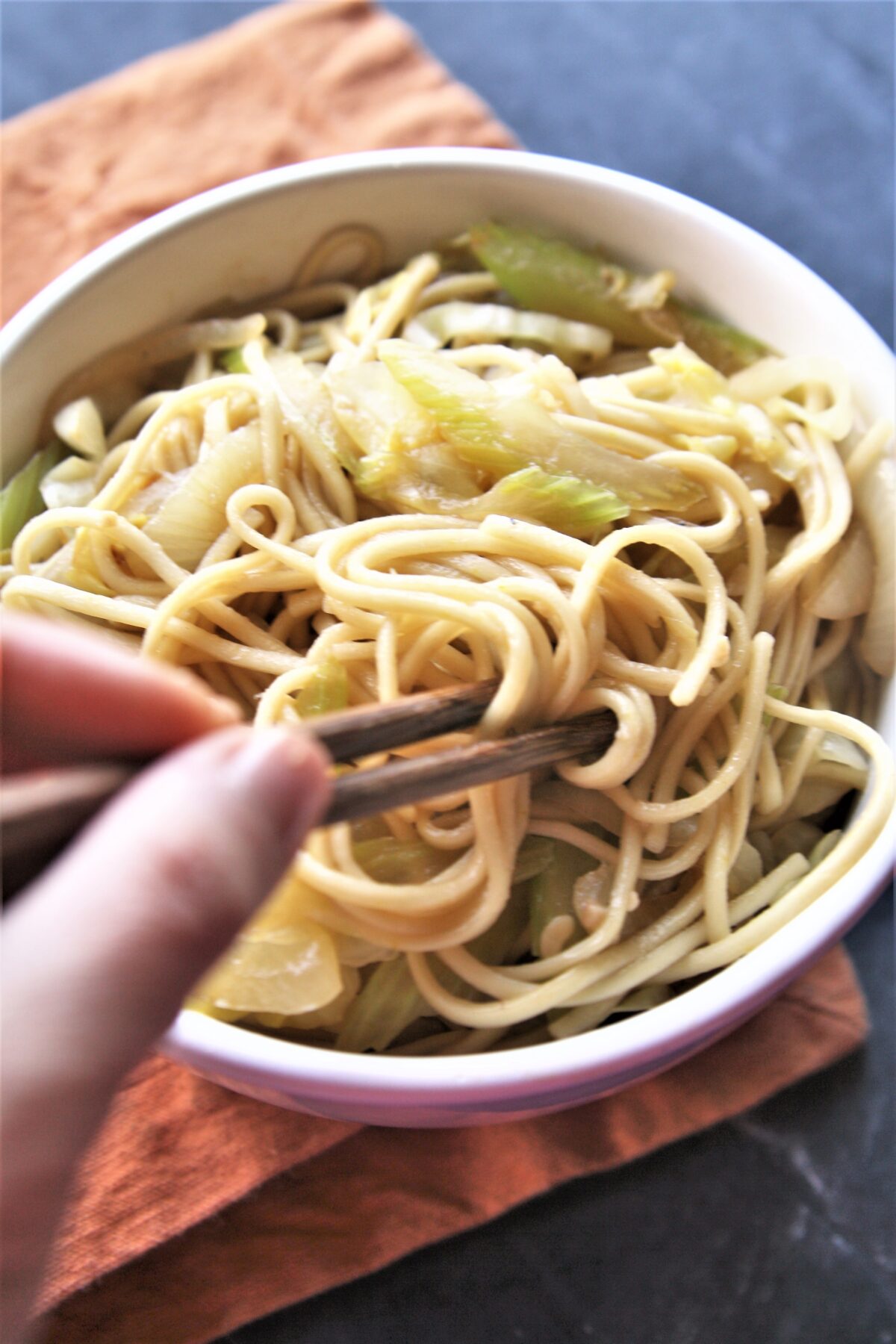

Enjoy your vegan chow mein packed with delicious, fresh vegetables and a savory, sweet sauce. It’s the perfect, easy meal for those who want to enjoy American Chinese cuisine without compromising their dietary choices!
Copycat Panda Express Chow Mein Recipe (Vegetarian, Vegan)
Ingredients
- ¼ cup soy sauce
- 1 tablespoon brown sugar
- 2 cloves garlic minced
- 1 teaspoon grated fresh ginger
- 1/2 teaspoon sesame oil
- 2 tablespoons vegetable oil
- 3 5.6 ounce packages Yakisoba noodles
- 2 stalks celery thinly sliced
- 1 medium onion thinly sliced
- 2 cups cabbage thinly sliced
Instructions
- In a small bowl, combine soy sauce, brown sugar, garlic, ginger, and sesame oil. Set the sauce mixture aside.
- Remove the Yakisoba noodles from their packaging and discard the included flavor packets. Rinse the noodles well under cold water, drain, and set aside.
- Heat vegetable oil in a large wok or skillet over medium heat. Add celery and onion, sautéing for about 1-2 minutes, or until the onions begin to soften. Add cabbage and sauté for another minute until the cabbage starts to wilt.
- Add the rinsed noodles and the prepared soy sauce mixture to the veggies. Stir everything together and cook over medium-high heat for 2-3 minutes, or until the noodles are heated through and coated with the sauce.
- Once everything is heated through, remove from heat and serve immediately.
